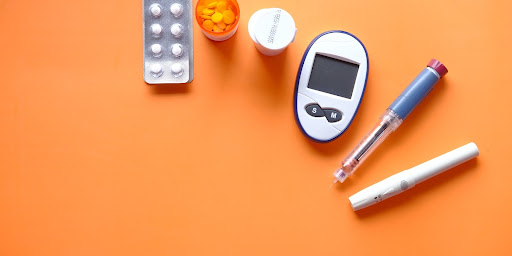Are you curious about what having an A-positive blood type means and how it affects your diet? If so, then you're in the right place! In this blog post, we'll closely examine what eating according to the A-positive blood type entails. We'll explore which foods benefit individuals with an A-positive blood type and which should be avoided, informing readers on why certain dietary restrictions must be adhered to if they hope to achieve optimal health outcomes. Read on for a comprehensive guide to the A-positive blood type diet!
Eating foods based on blood type
Proponents of the blood type diet believe that different types of food benefit each individual based on their specific blood type. For example, people with Type A blood may consume more vegetarian foods and fewer red meats than those with Type O blood.
Foods especially beneficial for people with Type A blood include tofu, seafood, grains, legumes, and vegetables. People with Type O blood should eat a diet high in animal protein, such as lean red meats and poultry. Those with Type B blood may benefit from certain dairy products, green vegetables, eggs, low-fat meats, and nuts.
1. Overview of the A-Positive Blood Type Diet.
The A-positive blood type diet is a personalized approach to nutrition designed specifically for people with Type A+ blood. It focuses on eating fresh, nutrient-dense foods that benefit individuals with this blood type. The goal of the diet is to help reduce inflammation and optimize health outcomes by promoting optimal digestion and assimilation of nutrients from the foods consumed.
2. Foods that are beneficial for A-positive individuals
Foods especially beneficial for A-positive individuals include legumes, organic tofu, nuts and seeds, fish, fruits, and leafy green vegetables. These foods should be eaten in their most natural state whenever possible, avoiding processed and refined foods. Consuming only organic produce and avoiding foods containing artificial colors, flavors, or preservatives is also important.
Foods to Avoid
There are a few key considerations when it comes to avoiding certain foods on the A-positive blood type diet. Red meat should be avoided as much as possible; this includes beef, pork, and lamb. Additionally, processed grains such as white flour and dairy products other than yogurt should be eliminated from the diet. Alcohol is also not recommended for A-positive individuals, as it can further increase the risk of inflammation.
Benefits of Eating for Your Blood Type.
1. Eating according to your blood type can help reduce inflammation, which benefits overall health and well-being.
2. Being mindful of which foods are beneficial and which should be avoided can help promote better digestion and absorption of nutrients, optimizing general health outcomes.
3. Eating a diet tailored to one's blood type can help protect against certain illnesses and diseases, reducing the risk of long-term health complications.
4. By avoiding inflammatory foods, people with A-positive blood types can reduce their risk of developing chronic conditions such as heart disease and diabetes.
4. Meal Suggestions for an A-Positive Diet.
Eating according to your A-positive blood type is not difficult, but it can take some getting used to. To help you, we have compiled a few meal suggestions to give you an idea of what it means to follow the A-positive diet.
Breakfast: Start your day with a breakfast bowl of quinoa, chia seeds, and fruits such as mangoes, blueberries, and raspberries. Top with a sprinkle of cinnamon for an added boost of flavor.
Lunch: Enjoy a hearty salad with spinach leaves, chopped cucumbers, tomatoes, avocado slices, roasted chickpeas, and your favorite dressing.
Dinner: Try a veggie-packed stir-fry with zucchini, bell peppers, and onions. Serve over brown rice or quinoa for an extra dose of fiber.
Snacks: Choose snacks rich in protein, such as nuts, seeds, hard-boiled eggs, and nut butter paired with fruits or veggies.
5. Tips on Sticking with the A-Positive Diet.
1. Preparing meals in advance can help you stay on track with the A-positive diet. Meal prepping lets you plan and ensure that whatever you eat complies with your blood type.
2. Find recipes online or in cookbooks specifically tailored for people with an A-positive blood type. That way, you can keep your meals interesting and reap the benefits of eating for your blood type.
3. Stay organized when grocery shopping so that you remember the foods to avoid. Create a mental list of what foods are off-limits and make it a point to steer clear of them when you're in the store or at restaurants.
4. Incorporate plenty of fresh foods into your diet, as these are the most beneficial for the A-positive blood type. Try to focus on organic produce and lean proteins whenever possible.
5. Be mindful of how you're feeling after eating certain meals. Paying close attention to your body will help you decide which foods should be kept in your diet and which should be tossed out.
6. Exercise Recommendations for People With A-Positive Blood Types
. Regular physical activity is essential for maintaining good health, regardless of blood type. However, individuals with an A-positive blood type should focus on calming activities such as yoga or tai chi to promote relaxation. Avoid high-intensity workouts and stick to low-impact exercises like walking or swimming instead.
7. Seek Professional Advice.
Finally, if you have any questions or concerns regarding your diet and the A-positive blood type, consult a medical professional. They can provide helpful insight and answer any queries about eating for your specific blood type.
FAQs
What foods are best for the A+ blood type?
Individuals with an A+ blood type should focus on organic vegetables and fruits, seafood, turkey, whole grains, nuts, and seeds. It is important to avoid caffeine, alcohol, processed meats such as bacon or sausage, and dairy products. Eating various foods will help provide essential nutrients and optimal health outcomes for those with the A+ blood type.
What is blood group A and diet?
Blood group A is the second oldest blood type, and individuals with this blood type may benefit from following a vegetarian-based diet. Those with an A+ blood type should focus on consuming organic vegetables and fruits, seafood, turkey, whole grains, nuts, and seeds while avoiding caffeine, alcohol, processed meats such as bacon or sausage, and dairy products.
Is coffee good for blood group A?
Unfortunately, coffee is not recommended for individuals with an A+ blood type. Caffeine has been linked to several adverse health effects, including increased risk for heart disease, diabetes, and stroke. It is best to avoid this stimulant to achieve optimal health outcomes.
Conclusion
Individuals with an A-positive blood type have particular dietary needs meant to help them achieve optimal health. Foods like lean meats, legumes, and fruits should be a major part of their diets, while processed foods and dairy products should be avoided. Eating according to the A-positive blood type diet can help individuals with this blood type to achieve maximum health benefits, giving them the energy they need and helping to reduce their risks of developing certain health conditions. By following the dietary recommendations outlined in this blog post, individuals with an A-positive blood type can be assured that they are eating in a way that meets their needs.






